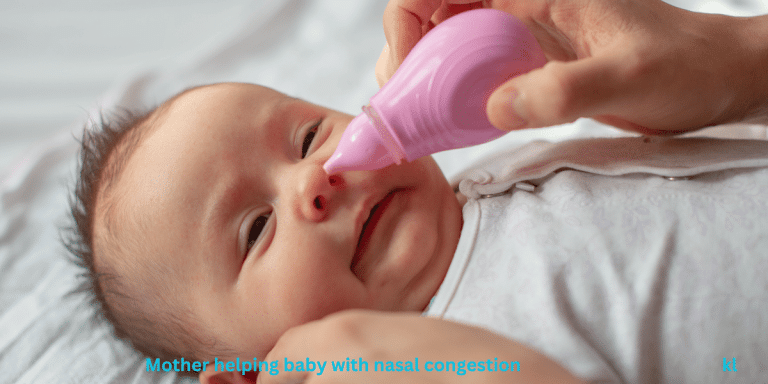The minute your tiny bundle of joy is placed in your arms, the questions start rolling in. How do I handle diaper changes at 3 AM? Is the baby eating enough? Should I worry about that tiny sneeze?
Don’t worry—I’ve been there, and this baby care guide: The Ultimate Baby Care Guide for New Moms – All You Need to Know, is designed to help answer those questions (and the ones you haven’t thought of yet) from feeding and sleeping to understanding your baby’s cries.
This comprehensive guide covers everything you need to know during those precious early months. So, grab a cup of tea (or cold coffee—we know how it goes) and let’s dive into the essentials of baby care.
- Getting Started: Basic Newborn Care Essentials
- Feeding Your Baby: Breastfeeding and Bottle-Feeding Success
- Baby Sleep Essentials: Creating Healthy Sleep Habits
- Health and Wellness: Keeping Your Baby Healthy
- Daily Routines and Baby Development: Nurturing Growth with Flexibility and Fun
- Self-Care for New Moms: Finding Balance in the Chaos
Getting Started: Basic Newborn Care Essentials
There’s something about the responsibility of keeping a fragile little human alive that hits differently when you leave the hospital. The good news? You don’t need all the fancy gadgets. You just need the basics—and a little confidence.
Baby Holding: Handle with Care (But Not Too Much Fear)
I’ll admit, holding my baby in those first days made me nervous. The head control wasn’t there, and it felt like one wrong move would break her.
I later realized babies are sturdier than they seem—as long as you support their head and neck. Also, swaddling my baby made holding her much easier during those first few weeks. It didn’t just calm her when she was fussy – it also helped prevent her from startling herself awake.
I stuck to the “safe swaddle” rule: keeping her arms snug, her hips loose, and ensuring no loose blankets were in the crib.

Baby Hygiene: Bathing and Skincare Without the Tears
Bathing a newborn felt terrifying at first. They’re slippery, wiggly, and not exactly thrilled about the whole process. I started with sponge baths for the first couple of weeks, focusing on wiping down his face, neck, and those adorable little hands.
Once the umbilical cord fell off, I eased into actual tub baths, keeping the water warm but not too hot (around 98°F is the sweet spot).
Pro Tip: Use a fragrance-free baby wash and apply a gentle baby moisturizer afterward to avoid dry skin. Babies can be surprisingly prone to flakiness, especially in the first month.
For baby skincare, less is more. Newborn skin is delicate, and I learned quickly that slathering them in products can do more harm than good.
Stick to natural or pediatrician-approved creams. And if you spot a flaky scalp or cradle cap, a soft brush and a little coconut oil work wonders.
Diaper Duty: Mastering the Art (and the Blowouts)
I won’t sugarcoat it—diaper changing is a full-time job in those early days. Newborns can go through 8-12 diapers a day (yep, that’s almost 400 in the first month).
The key to surviving it? Be prepared. I kept a changing station in both the nursery and the living room, stocked with diapers, wipes, rash cream, and a change of clothes—because blowouts will happen.
- Tip: Wipe front to back for girls to avoid infections. And for boys? Cover the goods to dodge surprise showers.
- Umbilical Cord Care: Until the stump falls off (around 1-2 weeks), gently wipe it with warm water and keep the area dry. No alcohol wipes, just air drying and avoiding tight waistbands. You can also apply chlorhexidine to the tip, stump, and base of the cord immediately after it’s cut. Repeat once a day or as directed by your healthcare provider.
- Nail Care: Baby nails grow faster than you think, and those tiny claws can scratch their face in seconds. I used a soft emery board at first—nail clippers felt like overkill when their nails were so soft and thin.

What You Need (and What You Can Skip)
The baby market loves to tell you that you need a $200 wipe warmer or 15 different types of bottles. But here’s the truth: you don’t. Our list of baby essentials covers everything you actually need, without emptying your wallet.
Feeding Your Baby: Breastfeeding and Bottle-Feeding Success
Those tiny humans can eat a lot. Whether you’re breastfeeding, bottle-feeding, or doing a bit of both, figuring out the best routine can be overwhelming at first.
But do not worry! Let’s break it down so feeding feels a little less intimidating and a lot more manageable.
Breastfeeding Basics: Finding Your Flow
Breastfeeding can be beautiful…but also a bit of a struggle at first. Nobody really tells you that latching doesn’t always happen naturally, and sometimes it takes a few tries (and a few tears) to get it right.
For me, the football hold worked wonders in those early weeks, but once I got the hang of it, the cradle hold became my go-to.
Pro Tip: Experiment with different breastfeeding positions—sometimes just a slight shift can make latching easier for both you and baby. I found that using a nursing pillow helped take the strain off my arms and kept my little guy in the perfect spot.
Latching Like a Pro:
- Wide mouth, full latch. Aim for the baby to take in as much of the areola as possible—not just the nipple. A shallow latch = sore nipples.
- Listen for swallowing sounds. That’s your cue that things are working. If you only hear smacking, unlatch and try again.
- Breastfeeding pain isn’t normal. A tugging sensation? Yes. Toe-curling pain? No. If something feels off, reach out to a lactation consultant.

Creating a Feeding Schedule (Without Losing Your Mind)
Honestly, I was a bit obsessive about baby feeding schedules. I thought there was some magical formula (pun intended) that made newborns sleep through the night. Spoiler: There isn’t. But having a loose plan does help.
Typical newborn feeding schedule (0-3 months):
- Breastfed babies: Every 2-3 hours (sometimes every hour during growth spurts).
- Formula-fed babies: Every 3-4 hours (1.5 to 3 oz per feed at first).
Cluster feeding was something I was not prepared for. Around growth spurts (hello, week 3 and week 6), it felt like I was feeding non-stop. But this was totally normal—babies often eat frequently to help boost your milk supply.
Bottle-Feeding Without the Guesswork
If you’re bottle-feeding—whether it’s formula or pumped breast milk—there’s a bit of an art to it. I had no idea there were actual bottle-feeding guidelines that suggested feeding baby upright and not flat on their back. This little tip helped us avoid the dreaded reflux.
Formula feeding tips I wish I’d known earlier:
- Water first, then powder. Always mix the formula this way to ensure the right balance.
- Fresh is best. Don’t let the formula sit out for more than 1 hour after it’s prepared.
- Burp often. Every 2-3 ounces, pause to burp your baby. Baby burping techniques like gentle back-patting or sitting the baby upright worked best for us.
For pumped breast milk storage guidelines, I followed the rule of 4—4 hours at room temp, 4 days in the fridge, and 4 months in the freezer.
And yep, labeling each bag with the date saved me from the chaos of trying to guess how long milk had been sitting there.
Pumping and Milk Supply: Keeping the Flow Going
Pumping became part of my routine once I wanted a little more freedom. At first, it felt awkward—and I won’t lie, a bit like I was part of a milking station. But it got easier. Pumping every 2-3 hours helped keep my supply up, and I quickly learned that morning sessions yielded the most milk.
Storing breast milk:
- Freeze flat to save space. Those milk storage bags? Lay them down so they freeze in a thin layer.
- Thaw gently. Avoid microwaving! I warmed milk in a cup of hot water.
Understanding Hunger Cues: Is Baby Full or Still Hungry?
One of the biggest lightbulb moments was realizing that babies have feeding cues long before they cry. My baby would start rooting (turning his head side to side), sucking on his hands, or making little smacking noises. Crying was his last resort—by then, she was hungry (and harder to calm down).

Common Feeding Problems (and How I Fixed Them)
- Latching Issues: My baby had a shallow latch, which led to some serious nipple pain. I worked with a lactation consultant who showed me breastfeeding tips for new moms, like the “sandwich” hold to help babies latch deeper.
- Reflux and Spit-Up: Reflux is tough. We kept the baby upright after feeds and burped frequently using baby burping techniques. It helped a lot!
- Low Milk Supply: Pumping after feeds and using breast milk storage guidelines let me build a stash for days when the supply dipped. Oatmeal and hydration worked wonders, too.
- Overfeeding (With Bottles): Slowing down bottle feeds and using a paced feeding method reduced spit-up and gas.
Baby Sleep Essentials: Creating Healthy Sleep Habits
Ah, baby sleep—a topic that can spark both excitement and dread for new parents. If you’re anything like I was, you probably Googled “newborn sleep patterns” at 2 a.m., wondering why your little one thought nighttime was party time.
But don’t worry—over time, with sleep training, you can help guide them toward better sleep habits (and maybe, just maybe, get some sleep yourself).

Understanding Newborn Sleep Patterns (and Why It Feels Like They Never Sleep)
Newborns sleep a lot, but it doesn’t always feel that way since their infant sleep schedule is completely unpredictable. In those early weeks, babies sleep in short bursts—typically 2 to 4 hours at a time.
That’s because their tiny tummies need frequent feeding. But by around 6 to 8 weeks, patterns start emerging. It’s not a full night’s sleep, but hey—progress is progress.
Fun fact: Newborns spend about 50% of their sleep in REM (active sleep), which means lots of wiggles, eye twitches, and even little grunts. I remember watching my baby and wondering if he was dreaming about milk.
Tips for navigating newborn sleep:
- Follow wake windows. Newborns can typically handle about 45 minutes to 1 hour of awake time before they need to sleep again. I learned this the hard way—an overtired baby = a cranky baby.
- Learn their sleep cues. Yawning, rubbing eyes, and zoning out were clear signals that nap time was near. If I waited until full-blown fussiness, getting him down was like wrestling a tiny octopus.
Creating a Safe Sleep Environment (Because Safety is Non-Negotiable)
When it comes to baby sleep safety, following the ABC rule helped me keep things simple – especially when preparing our home for the newborn, since creating a safe sleep environment is just as important as everything else.
- A – Alone (no pillows, blankets, or stuffed animals)
- B – Back (always place baby on their back to sleep)
- C – Crib (a firm, flat mattress in a safety-approved crib or bassinet)

I’ll admit, those adorable Pinterest-worthy nursery setups with fluffy bumpers and cute quilts looked cozy—but safe sleep practices for infants mean minimalism is best. A fitted sheet and nothing else.
Establishing a Baby Bedtime Routine (Even for Newborns)
I didn’t think newborns needed a bedtime routine—turns out, that even simple cues can help signal it’s time to wind down.
Around 6 weeks, I started doing a mini bedtime ritual that involved a warm bath, soft lullabies, and gentle rocking. By 3 months, he seemed to know when bedtime was coming.
Baby bedtime routine ideas:
- Bath, book, bed. Keep it consistent, even if it’s just a short routine.
- Dim the lights and lower the noise an hour before bedtime to create a calm environment.
- White noise machines were my saving grace—babies love that womb-like sound.
Consistency was key. Babies thrive on routine (even if it’s simple), and eventually, those little signals help them settle faster.
Gentle baby sleep training tips:
- Pick-up/put-down method. I’d soothe her in my arms until calm, then place him back in the crib. If he fussed, I’d repeat until he finally stayed asleep. It took patience, but it worked.
- Gradual retreat. Sitting by the crib and slowly moving further away each night helped him feel secure without relying on rocking.
Pro Tip: If naps were short, I used contact naps (letting him nap on my chest) to ensure he got enough rest. Not a forever thing, but sometimes babies just need that extra comfort.
Health and Wellness: Keeping Your Baby Healthy
Babies are tiny, fragile, and can’t exactly tell you when something’s wrong. But over time, I learned to relax (a little) and understand what was part of normal newborn behavior—and what needed a call to the pediatrician
Normal Newborn Behavior vs. When to Worry
Babies are quirky little humans. Hiccups, sneezing, and even random jerky movements are all part of the deal. I remember panicking the first time my baby stiffened up during sleep.
Turns out, newborns startle easily—it’s called the Moro reflex and totally normal.

What’s normal:
- Sneezing and coughing occasionally. It’s just their way of clearing dust or mucus.
- Crossed eyes or eye-rolling. Their muscles are still developing.
- Grunting or straining. Babies don’t have the best coordination for bowel movements yet.
But there are things you should watch for. Knowing when to seek medical help is essential for baby health monitoring.
Call the doctor if you notice:
- A rectal temperature over 100.4°F (38°C) (Newborn fevers are serious).
- Fewer wet diapers than normal—signs of dehydration.
- Persistent crying that nothing seems to soothe (could indicate colic, reflux, or illness).
- Lethargy or difficulty waking. If the baby seems unusually sleepy or limp, don’t wait—call immediately.
Vaccination Schedule and Pediatrician Visits
Those first few pediatrician visits felt like a whirlwind—so many things to cover! But sticking to the vaccination schedule for babies helped me stay on track with my baby’s health.
Pro Tip: I kept a little notebook with questions I wanted to ask at every pediatrician visit. Trust me, you’ll forget once you’re in there.
Vaccination basics for newborns:
- First 2 months: Hepatitis B (sometimes given in the hospital).
- 2-4 months: DTaP, Hib, Polio, Rotavirus, and PCV13.
- 6 months: Flu shots are introduced (yay, more needles).
Expect some fussiness or slight fever after shots—totally normal! I found skin-to-skin contact and extra cuddles helped calm my baby afterward.
Common Newborn Health Concerns (And How to Handle Them)
No matter how prepared you feel, things pop up. Here are a few issues I ran into—and how I dealt with them.
- Colic: Ah, the dreaded witching hour. Colic hit us around 3 weeks old. I tried bicycle kicks and warm baths, but sometimes, it just meant holding him and riding it out.

- Reflux in babies: Spit-up is normal, but projectile vomiting or constant discomfort needs medical attention. We adjusted his feeding position (more upright) and saw a huge difference.
- Diaper rash: Frequent diaper changes + diaper rash prevention cream became my best friends. I also gave him diaper-free time on a towel to let his skin breathe.
- Cradle cap treatment: Coconut oil or baby-safe shampoo worked wonders. I’d gently brush his scalp after bath time to loosen the flakes.
Baby First Aid 101 (Because Accidents Happen)
Key baby first aid tips:
- Choking: Lay baby face-down along your forearm, support their head, and give gentle back blows.
- Fever: Use a rectal thermometer for the most accurate newborn temperature guide. Anything over 100.4°F (38°C) in a baby under 3 months? Straight to the doctor.
- Burns or cuts: Cool under running water (no ice!) and cover with a clean cloth. Seek medical help for anything beyond a superficial burn.
I also stocked up on baby first aid kit essentials: baby-safe nail clippers, a thermometer, saline spray, and gas drops
Daily Routines and Baby Development: Nurturing Growth with Flexibility and Fun
As a new parent, I quickly realized that structure is key, but flexibility is even more important when it comes to your baby’s daily routine.
Things don’t always go as planned (shocking, I know), and some days your baby might be fussy, or you might just need a little extra rest.
But over time, creating a flexible, comforting schedule not only brings peace to your day, but it also supports your baby’s developmental milestones.
Creating a Flexible Daily Routine That Works for Both of You
Here’s what I found worked best for us:
- Morning: Start with a morning feed and a brief cuddle. This helps establish a sense of routine but lets you both ease into the day.
- Mid-Morning: Tummy time followed by a nap (I know—getting baby down for a nap is an art form).
- Afternoon: Another feed, some developmental play (like baby massage or gentle stretching), and a walk outside if weather permits.
- Evening: After a final feed, a soothing bath, and some quiet bonding time before bed.
The key? Be flexible. Some days, your baby will nap longer, other days not at all. Let your schedule flow with your baby’s needs rather than forcing everything to fit in tight time slots.
Understanding Developmental Milestones and Supporting Growth
Don’t stress if your baby doesn’t meet every milestone exactly on time—every little one is different! What’s important is knowing what to expect and being prepared to support their growth.
Common milestones to look for:
- 1-2 months: Your baby will start holding their head up (yay, neck strength!).
- 3-4 months: Tummy time is crucial during this stage—your baby might begin to roll over!
- 5-6 months: Sitting up with support and reaching for toys are typical at this point.
- 6-9 months: Crawling or scooting may begin!

Supporting their growth is simple: Provide safe spaces for them to explore, encourage movement, and enjoy tummy time.
Baby developmental play—like rattles and soft toys—helps them develop hand-eye coordination. Don’t forget to celebrate every little win, even if it’s just that first, shaky attempt at sitting up.
Tummy Time and Baby Massage: Supporting Growth and Bonding
Tummy time. Oh, how I dreaded it at first. But, trust me, it’s one of the most important baby developmental exercises you can do.
Tummy time exercises help strengthen those neck, shoulder, and arm muscles, which are vital for rolling over and crawling down the line.
Tummy time tips:
- Start with just a minute or two at a time, building up as the baby gets stronger.
- Use a soft play mat or blanket. I found putting a favorite toy in front of them to grab helped them enjoy the activity.
- Always supervise—the baby might get frustrated, but it’s a critical skill.
And then there’s baby massage techniques—another one of my favorite ways to bond. A gentle massage after a bath or nap not only helps with relaxation but also promotes better sleep habits.
I’d use a baby-safe oil, and with soft, circular motions, I’d massage their arms, legs, and belly. It helped soothe my baby, especially on those fussy days.
Baby Bonding Activities to Strengthen Your Connection
Bonding with your newborn is one of the most beautiful parts of early parenthood. Newborn bonding activities are essential, not just for your baby’s development but for your relationship too.
Some simple bonding ideas I loved:
- Skin-to-skin contact: This promotes feelings of security and warmth. Whether you’re breastfeeding or just cuddling, those moments are precious.
- Talking and singing to your baby: I didn’t realize how much babies absorb from our voices. Even if I thought they were just staring at me, my baby was soaking it all in.
- Reading to your baby: They might not understand, but the rhythm of your voice helps with language development.

And yes, there are days when your newborn will cry for what feels like no reason at all. It can be overwhelming but trust that you’re doing your best.
Over time, you’ll start to recognize their crying patterns—whether it’s due to hunger, tiredness, or simply needing comfort.
Self-Care for New Moms: Finding Balance in the Chaos
I remember the first few weeks after giving birth—juggling new mom-baby care, breastfeeding, and barely getting a moment to eat or shower.
But here’s the thing: postpartum recovery isn’t just about healing your body—they’re about preserving your mental health too. Let’s dive into how you can take care of yourself while caring for your newborn.
Managing Postpartum Recovery While Caring for Your Newborn
It’s no secret that postpartum recovery can feel like a marathon, not a sprint. After the birth, your body needs time to heal, but it’s also up to you to balance recovery with taking care of your baby.
I remember thinking I should be bouncing back immediately, but healing takes time—postpartum baby care is a process that doesn’t happen overnight. One thing I didn’t realize at first was how much postpartum nutrition could help in the healing process.

Here’s what helped me:
- Take it slow: Don’t push yourself too hard. If you’re recovering from a C-section or vaginal birth, give your body time. I had to remind myself that this was a healing process and not a race to “get back to normal.”
- Ask for help: Whether it’s from your partner, family, or friends, asking for help is essential. I wasn’t always the best at it, but when I did, it made the world of difference.
Prioritize rest: As a new mom, I thought I could just keep going, but after a while, I realized that I needed to rest for my own well-being. It’s okay to put the baby down for a nap while you catch up on your own sleep – your health is a priority too.
I also found that using my postpartum essential oil helped a lot. Just a quick rub on my temples or wrists made me feel calmer and more grounded, which honestly made those short naps even more refreshing. Sometimes, it’s the little things that make the biggest difference.
Strategies for Handling Sleep Deprivation and Fatigue
Let’s face it: sleep deprivation is real, and it hits harder than you ever thought possible. Between late-night feedings and getting up for diaper changes, sleep can feel like a distant memory.
Here are a few infant care hacks that helped me manage those sleepless nights:
- Sleep when the baby sleeps: Sounds cliché, but this advice was a game-changer. The first few weeks, I was convinced I had to do everything—laundry, cleaning, cooking—but if I had just napped when my baby napped, I would’ve felt a lot better.
- Share nighttime duties: If you have a partner, divide the night shifts. If you’re breastfeeding, pump ahead of time so your partner can help with bottle-feeding. Trust me, getting a solid 4-hour stretch of sleep is heavenly.
- Rest when possible: Even if you’re awake, take breaks. Relax in a chair or stretch out on the couch while the baby is peacefully napping. Taking those moments of rest is crucial.
It’s hard, I know. But remember that this phase will pass. Your baby will eventually sleep longer stretches, and you’ll slowly start to reclaim your energy.

Building a Support System and Asking for Help
Asking for help isn’t a weakness; it’s a strength. Honestly, I struggled with this at first. I thought I had to do it all on my own, but after a few weeks of burnout, I learned the importance of building a support system.
- Reach out to loved ones: Whether it’s your partner, your parents, or friends, don’t be afraid to lean on people you trust. I found that even just having someone bring over a meal or help with baby care for an hour gave me the mental break I needed.
- Join a mom group: Finding a community of other new moms can be incredibly reassuring. I joined a few online groups, and it felt so comforting to know that other women were going through the same experiences—colicky babies, sleep regressions, you name it.
- Accept help: If someone offers to take the baby for a walk, take them up on it! I used to feel guilty about asking for help, but I realized it wasn’t just about me—it was about making sure I could be the best mom I could be.
Remember, you’re not in this alone. Letting others help you doesn’t make you any less capable. It’s actually a key part of postpartum self-care for moms.
Motherhood isn’t about perfection—it’s about love, learning, and enjoying the little moments. By following this baby care guide: The Ultimate Baby Care Guide for New Moms – All You Need to Know, you’ll feel more confident and prepared for whatever comes your way.
Trust your instincts and don’t hesitate to reach out to your healthcare provider or join local parenting groups for additional support.
And if you ever feel unsure, just revisit this guide. You’ve got this, mama!








